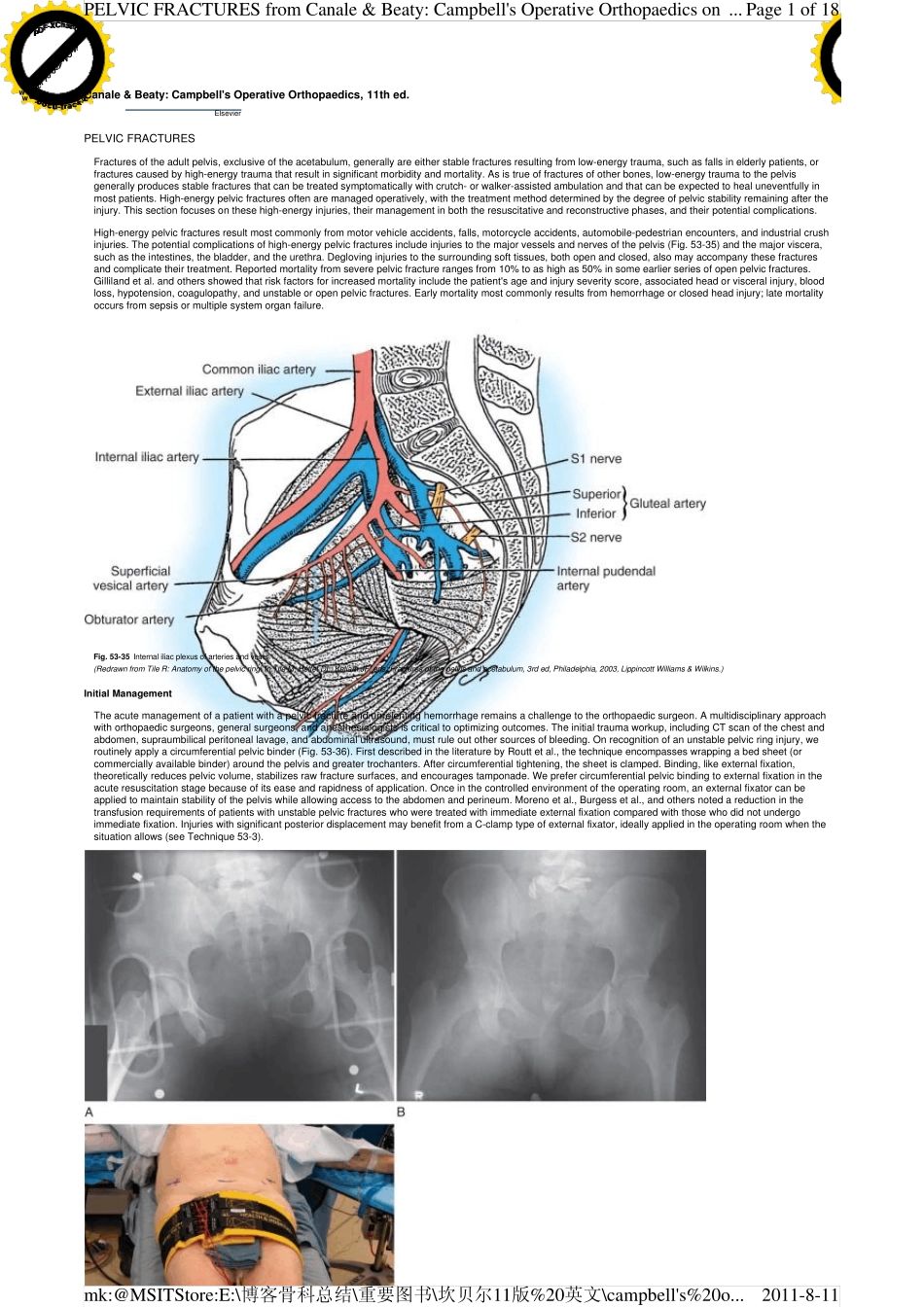Canale & Beaty: Campbell's Operative Orthopaedics, 11th ed. ElsevierPELVIC FRACTURESFractures of the adult pelvis, exclusive of the acetabulum, generally are either stable fractures resulting from low-energy trauma, such as falls in elderly patients, orfractures caused by high-energy trauma that result in significant morbidity and mortality. As is true of fractures of other bones, low-energy trauma to the pelvisgenerally produces stable fractures that can be treated symptomatically with crutch- or walker-assisted ambulation and that can be expected to heal uneventfully inmost patients. High-energy pelvic fractures often are managed operatively, with the treatment method determined by the degree of pelvic stability remaining after theinjury. This section focuses on these high-energy injuries, their management in both the resuscitative and reconstructive phases, and their potential complications.High-energy pelvic fractures result most commonly from motor vehicle accidents, falls, motorcycle accidents, automobile-pedestrian encounters, and industrial crushinjuries. The potential complications of high-energy pelvic fractures include injuries to the major vessels and nerves of the pelvis (Fig. 53-35) and the major viscera,such as the intestines, the bladder, and the urethra. Degloving injuries to the surrounding soft tissues, both open and closed, also may accompany these fracturesand complicate their treatment. Reported mortality from severe pelvic fracture ranges from 10% to as high as 50% in some earlier series of open pelvic fractures.Gilliland et al. and others showed that risk factors for increased mortality include the patient's age and injury severity score, associated head or visceral injury, bloodloss, hypotension, coagulop...


